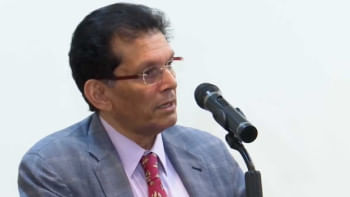US manufacturing near two-year high
US manufacturing activity accelerated more than expected in October, with new orders jumping to their highest level in nearly 17 years amid a shift in spending toward goods like motor vehicles and food as the COVID-19 pandemic drags on.
The survey on Monday from the Institute for Supply Management (ISM) was the last piece of major economic data before Tuesday's bitterly contested presidential election. But the outlook for manufacturing is challenging.
While the coronavirus crisis has boosted demand for goods complementing the pandemic life, a resurgence in new cases across the country could lead to authorities re-imposing restrictions to slow the spread of the respiratory illness as winter approaches, which could crimp activity. Government money for businesses and workers hit by the pandemic, which boosted economic growth in the third quarter, has dried up.
"Manufacturing rebounded strongly with fewer restrictions on economic activity and stimulus efforts, but the path forward will be more difficult as the economy continues to cope with the pandemic," said Gus Faucher, chief economist at PNC Financial in Pittsburgh, Pennsylvania.
The ISM said its index of national factory activity increased to a reading of 59.3 last month. That was the highest since November 2018 and followed a reading of 55.4 in September.
A reading above 50 indicates expansion in manufacturing, which accounts for 11.3% of the U.S. economy. Economists polled by Reuters had forecast the index rising to 55.8 in October.
The jump in activity, however, likely overstates the health of the manufacturing sector. A report from the Federal Reserve last month showed output at factories dropping 0.3% in September and remaining 6.4% below its pre-pandemic level.
Manufacturers and suppliers said last month they "continue to operate in reconfigured factories" and with every month were "becoming more proficient at expanding output." Though sentiment among manufacturers remained upbeat, there were two positive comments for every cautious comment, a slight decrease compared to September.
The outcome of Tuesday's vote is expected to lead to a brief period of uncertainty. President Donald Trump is trailing former Vice President and Democratic Party candidate, Joe Biden, in national opinion polls.
Stocks on Wall Street were trading higher following their steepest weekly loss. The dollar was steady against a basket of currencies. U.S. Treasury prices rose.
Fifteen industries, including apparel, food, furniture and transportation equipment reported growth last month. Textile mills and printing reported a contraction.
Manufacturing's continued recovery will likely keep the economy floating, with growth expected to slow sharply in the fourth quarter after a historic 33.1% annualized rate of expansion in the July-September period.
Growth last quarter, which followed a record 31.4% pace of contraction in the April-June quarter, was juiced up by more than $3 trillion in government pandemic relief. There is no deal in sight for another round of fiscal stimulus.
A separate report from the Commerce Department on Monday showed construction spending rose a moderate 0.3% in September, slowing after a 0.8% increase in August.
The coronavirus crisis has pulled spending away from services towards goods that complement the changed life-style. Spending on goods has surpassed its pre-pandemic level.

 For all latest news, follow The Daily Star's Google News channel.
For all latest news, follow The Daily Star's Google News channel. 



Comments